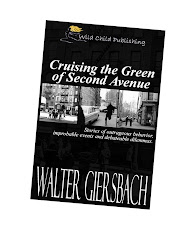 |
| Brace Beemer, the voice of the Lone Ranger from 1941 to1954. |
My brother Billy and I were possessive about the family’s
wooden, cathedral-shaped radio when I was ten and he was seven. Sunday afternoons in the late 1940s meant “Gangbusters,” “The Shadow” and “The Cisco Kid” on
KOIN out of Portland, Oregon. But no
show compared with “The Lone Ranger,” when Brace Beemer said, “Come on,
Silver! Let's go, big fellow! Hi-yo Silver!
Away!”
To make sure that no one intruded on our radio heroes, we hauled out a blanket, arranged two chairs and laid the blanket down to form a tent.
The RCA had one other feature we called the mark of the bacon. The “bacon” was graphic decoration, a series
of parallel wavy lines at the end of the dial.
It was drawn the way a little kid would draw a piece of bacon. We knew it could tell the listener he had
penetrated to the very edge of the highest frequency. Just as the speedometer on our ’39 Buick
measured up to 120 miles per hour, we knew there was a reason for putting it
there or else why was it drawn?
The RCA Victor disappeared when I was eleven, and a
console came into our home, a large piece of furniture with a drop-leaf that
let you roll out a combination tuner and 78 rpm record player. The fabric over the lower half of the front
covered an eight-inch speaker – the mother of all speakers. On each side were tall narrow cupboards to
store our records, the Mozart and Brahms albums Mom and Dad bought to introduce
us to culture. The William Tell Overture
cueing the Lone Ranger wasn’t classical as much as it was, well, exciting.
The drop-leaf made a sort of tent, but we knew RCA had
compromised. The dial didn’t have
short-wave and the sign of the bacon was missing. Further, this guy Clayton Moore took over
Brace Beemer’s role, and one of our first heroes disappeared from our lives. Still, there was that white dog Nipper listening
to his master’s voice.
As often happens, I grew up and so did Billy. Family moves took place as our world came
apart by going to Southern California, relocating to Montclair, New Jersey, and
finally abandonment when the parents moved to Cherry Hill. I reached escape velocity at age 17 and spun
off to Iowa, Illinois and Massachusetts.
While I was in Korea, the radio was replaced by an imitation-woodgrain model
the parents placed back in a corner behind an easy chair. No one would want to taste that. The RCA was consigned to the dining room, and
the radio-record player removed to store wine glasses and a sticky half-empty
bottle of sherry.
Now, in a kind of time warp, old-time radio programs have returned
to my computer. I click into one of the
many radio Internet sites. Amos ‘n’ Andy
come alive, the creaky door of the Inner Sanctum reopens, and the Lone Ranger
rides again.



No comments:
Post a Comment